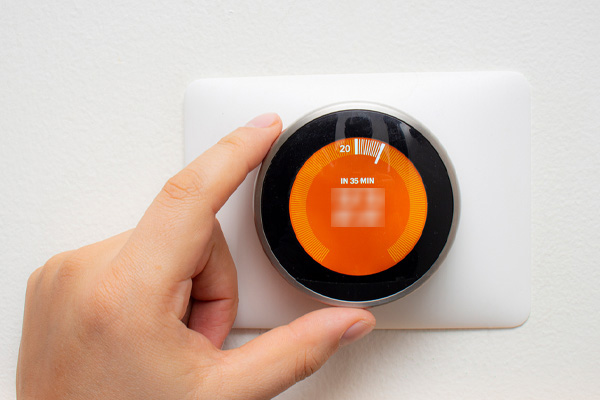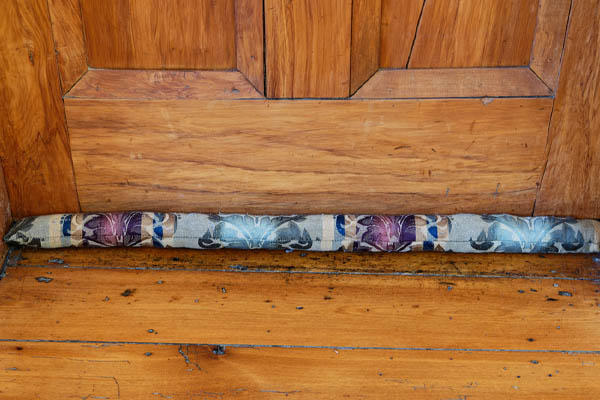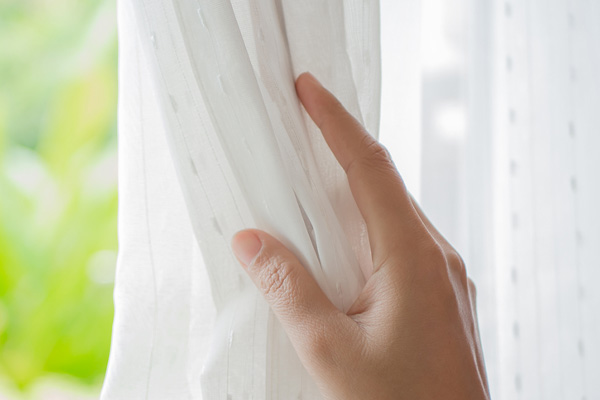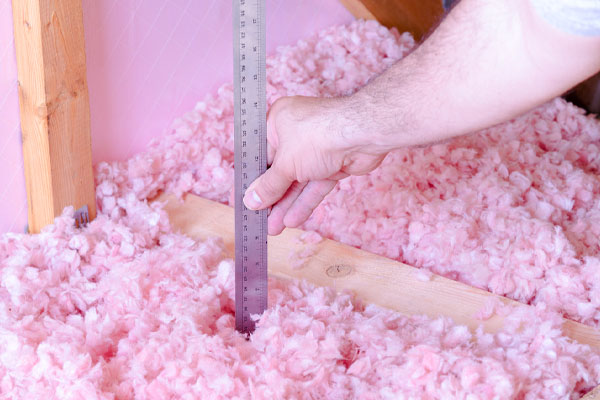10 Winter Hacks For A Warmer House Without Cranking Up The Thermostat
 Your home should be a warm shelter from the cold winter temperatures. If you are shivering inside, you may be desperate for more heat. Most people rush to the thermostat to crank up the heat. Sure, it works, but it also pushes up energy costs. That isn’t a good trade-off. Fortunately, you can enhance indoor comfort without increasing your energy expenses with alternative strategies. This article lists some heating hacks for home below.
Your home should be a warm shelter from the cold winter temperatures. If you are shivering inside, you may be desperate for more heat. Most people rush to the thermostat to crank up the heat. Sure, it works, but it also pushes up energy costs. That isn’t a good trade-off. Fortunately, you can enhance indoor comfort without increasing your energy expenses with alternative strategies. This article lists some heating hacks for home below.
10 Winter Heating Hacks Without Cranking Up the Thermostat
Contents
- 1 10 Winter Heating Hacks Without Cranking Up the Thermostat
- 1.1 1. Upgrade Your Thermostat
- 1.2 2. Change The Air Filters Regularly
- 1.3 3. Stop Door Drafts
- 1.4 4. Add Window Insulation
- 1.5 5. Seal Window Gaps
- 1.6 6. Let The Sunshine Inside Your Home
- 1.7 7. Reverse The Fan Rotation
- 1.8 8. Open The Interior Doors
- 1.9 9. Inspect & Improve Insulation
- 1.10 10. Make A Feast
- 1.11 Conclusion
- 2 Call McAllister Energy For All Of Your HVAC Requirements
Keep reading some home heating tips that you can use to increase your comfort in the winter season.
1. Upgrade Your Thermostat

Your heating needs evolve throughout the day. Therefore, your thermostat settings should change according to the situation. You could manually enter different temperatures at various times, but that would be tiresome. It is far better to automate the task and forget about it. Upgrade to a smart or programmable thermostat that can make the changes for you without fail. The affordable device is easy to use. Some can even sense movement, so they know whether the home is empty and adjust the heat for greater efficiency.
Related Article: Heat Pump Troubleshooting: Heat Pump Outside Fan Not Running
2. Change The Air Filters Regularly
HVAC systems use air filters to catch impurities like dirt, dust, dander, and pollen. It makes the home a healthier environment. It also keeps the equipment in top shape. However, the filters are only effective for a limited time. The build-up of dirt on their surfaces can eventually block airflow and lead to heating problems. Check the air filters monthly and replace them when necessary to avoid these problems. Fresh filters lower energy consumption and improve system performance.
3. Stop Door Drafts

Doors don’t sit flush against the frame. There is always some gap to prevent the door from scraping the floor as it swings. It allows cold air to get inside homes, reducing the temperature and making life harder for the heating system. You can counter this by placing a door draft stopper in front of the door. Make your own using sand and fabric, or purchase a dedicated product online. It should cover the entire width to block the cold air moving underneath.
4. Add Window Insulation
Glass windows let us see outside. However, they also allow heat to escape the home. Installing double-pane windows can minimize the problem. However, these can cost a fortune. Using plastic film is faster and cheaper. You can find window film insulation kits at reasonable prices. These products can block cold drafts. Cut the sheets to size and install them with adhesive tape. A hairdryer can help seal the film. Once winter fades away, you can peel off the see-through plastic. It will not leave any residue on the glass surface.
Related Article: What Is Mechanical Ventilation & How Does It Impact Your Home Comfort?
5. Seal Window Gaps
Window insulation is not enough. Seal the gaps around your windows. Replace old caulking if it is already damaged. Add weatherstripping to block cold air. These should help the home stay warm and comfortable. You can seal both the interior and exterior of the windows. Some people try to do everything themselves, but pros can also help for better results.
6. Let The Sunshine Inside Your Home

The sun is our best natural heat source. Harness it to make the house warmer free of charge. It can bump up the indoor temperature while reducing your dependence on the furnace, at least during the day. Just draw the curtains and open the blinds to let the sunshine inside. Remember that the sun moves from east to west. Natural heat will affect different rooms throughout the day. Close the window treatments at night to stop indoor heat from escaping.
7. Reverse The Fan Rotation
Blade rotation determines direction. Warm air rises when a ceiling fan runs clockwise. You can use this strategy during summer when people want relief from the heat. On the other hand, warm air falls when the fan moves counterclockwise. It is what you want to happen during winter when cold temperatures can be unbearable. Don’t underestimate this simple house hack. Try it and feel the difference immediately.
Related Article: Which Is More Efficient, A Fireplace Or Furnace?
8. Open The Interior Doors
We want to keep the exterior doors closed as much as possible to prevent cold air from getting inside. However, the interior doors are a different matter. You can keep these open to improve air circulation. It helps promote uniform heating throughout the home. You can do this for rooms with vents connected to the central heating system. If you wish to keep other spaces unheated, keep them closed off.
9. Inspect & Improve Insulation

Cranking the thermostat won’t do much if the house has poor insulation. Heat will keep escaping outdoors. Inspect your old insulation to see how it is holding up. Pay attention to the attic, basement, and exterior walls. Perhaps the existing insulation is old and damaged. Ask an insulation contractor about the condition of your current insulation and how to improve the efficiency and comfort of your home. Naturally, you want to use materials with a high R-value and moisture resistance. Do this in the fall to give yourself ample time to upgrade if necessary.
10. Make A Feast
The HVAC system is not the only source of heat inside the house. You have other appliances that emit heat, even if it is not their primary purpose. For example, you have a stove and an oven in your kitchen. If you want to get warm fast, bake a treat or cook a meal. Once the dish is ready, take it out and leave the oven door open to let the heat move around the kitchen. Enjoy your hot meal in a warm space. Keep pets and kids out to avoid accidents with the hot oven.
Conclusion
Extra heat can come from multiple sources. You don’t always have to rely on your HVAC system to increase the indoor temperature. You can harness the sun, the ceiling fan, and the cooking appliances. Another way to feel warmer is to retain more heat. Feel the difference when you improve the home insulation, seal the windows, and close the doors. Lastly, you can enhance the HVAC system with a programmable thermostat and a regular supply of fresh filters. If you need more advanced heating solutions, consult an experienced HVAC professional.
Call McAllister Energy For All Of Your HVAC Requirements

When you need superior HVAC services in Camden County, New Jersey, make sure to call McAllister Energy. We have the best professionally certified technicians on staff for all your high-quality heating and cooling maintenance, installations, replacements, and repairs. All our skilled techs have the knowledge and experience to service your HVAC system correctly.
McAllister Energy provides the most competitive HVAC service rates in the locality. We can help improve your comfort, energy efficiency, and indoor air quality while reducing your energy bills with our maintenance services. If you need to replace or repair your HVAC system, we can recommend the most suitable solutions that fit your budget. Your satisfaction is our priority, so all our work is guaranteed. Schedule a service appointment and call McAllister Energy today. We offer free, in-home estimates.
You can click here to contact us now or call us at (856) 665-4545 to find out more! Click the link to view our HVAC service area.